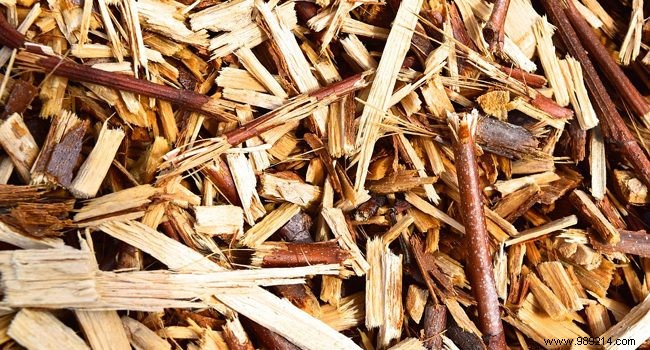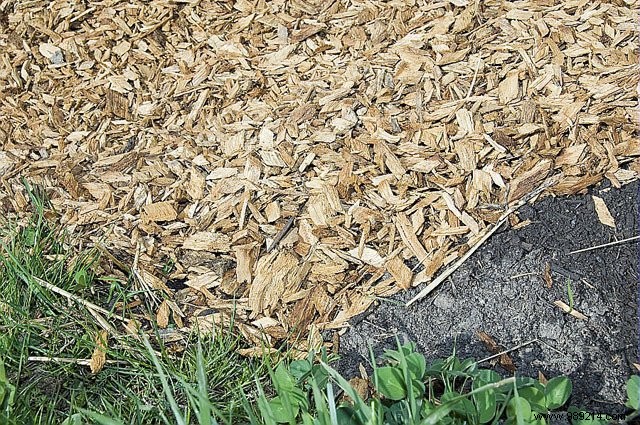
“Economical and ecological, the BRF or Bois Raméal Fragmenté method was introduced for the first time in Canada, about fifty years ago.”
The use of RCW seems to be very interesting to improve the quality of the soil of a garden. Indeed, it is a good way to develop biological activity, fauna and fungi beneficial to impoverished, porous or deteriorated soils.
When it comes to healthy soil, it will most certainly benefit more with compost.
Usually, the BRF is planted in the ground, and this helps to keep moisture in the soil, and to avoid too frequent watering. BRF is shredded young branches and it can offer many other advantages in the maintenance of a garden.
Thus, to know everything about this technique, we offer you this article entirely dedicated to the BRF.
Resulting from an experiment carried out by Laval University in Quebec, the RCW is simply obtained after the shredding of small leafless branches and twigs . These RCW chips are enriched with cellulose and lignin which are used to feed earthworms and fungi. Thus, it brings nutrients to the soil and improves its structure.
The BRF method also makes the development of fungi responsible for the decomposition of wood possible.
It is this decomposition that will precisely enrich the soil with nutrients, and the best time to spread it on the ground will be 24 hours after grinding. However, it must be mixed lightly into the soil, since that is how the organic matter will develop.
In addition, most often, we will use young branches or a little harder wood between 5 and 7 cm and coming from trees like oak , ash andthe acacia to make this shredded material.
So using leaves from climbing plants or the like will not be suitable for this purpose. In this case, it will be better to grind them to make compost.

The application of ramial chipped wood in a garden varies somewhat.
Some may use it as a mulch at fall time or in the spring when crops are established. For this method, it is rather advisable to first bring a little compost which you can also make using a plant shredder. Your plants will thus benefit from easily assimilated nitrogen.
Be careful, however, BRF can cause nitrogen hunger which will on the contrary encourage organic matter to take up nitrogen and deprive the plants of it. This effect can be controlled by growing legumes such as peas or alfalfa.
Besides, if you don't know which type of garden shredder to turn to, you will find all the information on this subject on shredders.info .
In addition, others choose to mix RCW directly with soil to facilitate the growth of microorganisms. This also encourages the growth of earthworms which will take care of working the soil well.
Note that the acacia BRF keeps slugs at bay.
The first benefit of BRF is found in its composition, which serves as food for micro-organisms, but also for small mammals, insects and birds. Thanks to this, there is a biodiversity that stimulates the ecosystem of a garden.
The fragmented ramial wood also facilitates the development of mycorrhizal fungi which are very interesting for plants because they can provide water and nutrients to them.
Despite the benefits that its mushrooms can provide to plants, they are absolutely not edible for humans.
In addition to improving soil structure, RCW retains moisture, allowing plants to better handle severe drought periods. Conversely, during periods of heavy rain, fragmented ramial wood will prevent problems such as erosion or the washout effect .
Let's not forget that the BRF is a good way to recycle green waste , since the crushing of twigs, twigs or other small wood makes it possible to obtain it. Of course, it is quite possible to buy some, but making it yourself saves you money!